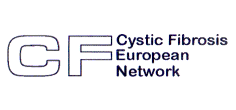Badania genetyczne
Congenital Adrenal Hyperplasia
Congenital Adrenal Hyperplasia
The CYP21A2 gene codes for 21-hydroxylase which is the enzyme required for cortisol and aldosterone synthesis by the adrenal cortex. 21-hydroxylase deficiency is the most common cause of congenital adrenal hyperplasia (CAH) that is a recessively inherited metabolic disorder (it means that the disease develop only if both copies of the gene have mutations).
There are two main forms of CAH caused by 21-hydroxylase deficiency: a classic and a non-classic form. The classic form caused by the severe enzyme deficiency is characterized by the prenatal onset of the virilization of the female fetuses. Girls with classic CAH can be virilized to a variable degree (usually enlarged clitoris, often accompanied by labial fusion). The classic form can be further divided into the simple virilizing form and the more frequent (present in about 3/4 of affected individuals) salt-wasting form. The salt-wasting form can cause life-threatening crises in affected individuals of both sexes and usually presents in the newborn period. If recognized the disorder is treatable by steroid therapy.
The persons with the non-classical form of CAH (NCAH) may be totally asymptomatic or develop at different points of life (from early childhood to adulthood) one or more signs of the androgen excess. Those include among others: precocious puberty, early and rapid growth spurt with ultimately short stature as adult, hirsutism (hair excess), but also, in women, the thinning hair at the head, especially at the temples (male pattern baldness), severe acne, oily hair and skin, fertility problems (menstrual irregularities and/or symptoms of Polycystic Ovarian Syndrome in women and low sperm count in men), mood swings.
The children with non-classic CAH do not have problems with electrolyte balance and girls are not virilized at birth. Moreover, symptoms seen in NCAH may remind those seen in other disorders, therefore sometimes it is difficult to establish the right diagnosis on the clinical bases only. However, genetic tests may unequivocally confirm the clinical suspicion of CAH.
Once the molecular investigation confirmed the diagnosis of CAH in the patient, the carrrier testing for at risk relatives can be offered. If both partners are healthy carriers of a mutation in CYP21A2 gene (only one copy of the gene has a mutation) their risk of conceiving a child with CAH is 25%. If one partner has CAH (both copies of his/her gene have mutations) and the other is the healthy carrier, the risk is much higher – 50%. Accordingly, the prenatal and preimplantational diagnostics of 21-hydroxylase deficiency is possible for couples where both partners are carriers of the known mutations in CYP21A2 gene.
Post-conception maternal steroid therapy with dexametasone from about week 6 to minimize virilization in an affected female pregnancy can be considered. There is no evidence of a harmful effect on a baby of the maternal dexametasone therapy during pregnancy or the mother herself, but long-term effects on the developing child are still being evaluated. Therefore the prenatal treatment is still considered to be experimental.










 venous blood collected
venous blood collected